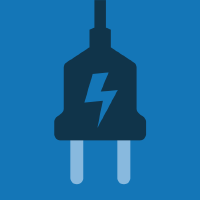Topic Editors


Optimisation, Optimal Control and Nonlinear Dynamics in Electrical Power, Energy Storage and Renewable Energy Systems, 2nd Volume

Topic Information
Dear Colleagues,
This Topic is a continuation of the previous successful Topic “Optimisation, Optimal Control and Nonlinear Dynamics in Electrical Power, Energy Storage and Renewable Energy Systems”.
The electrical power system is undergoing a revolution enabled by advances in telecommunications, computer hardware and software, measurement and metering systems, IoT, and power electronics. The increasing integration of intermittent renewable energy sources, energy storage devices, electric vehicles, and the drive for energy efficiency have resulted in an evolution of the traditional power systems towards a smarter grid, which is characterised, in part, by a bidirectional flow of energy and information. The evolution of the power grid, as well as its interconnection with energy storage systems and renewable energy sources, has created new opportunities for optimising not only its techno-economic aspects at the planning stages but also its control and operation. However, new challenges are emerging in optimising these systems related to the complexity, the uncertainties involved, and the nonlinear dynamic behaviour that these systems exhibit.
We are pleased to invite prospective authors to submit original research submissions covering innovations associated with the optimisation and optimal control in electrical power, energy storage and renewable energy systems, and the challenges associated with their nonlinear, uncertain, and complex behaviour. Topics of interest include but are not limited to:
- Novel approaches for the optimisation of techno-economic aspects of electrical power, energy storage, or renewable energy systems at the planning stage;
- Nonlinear dynamics in electrical power, energy storage, or renewable energy systems;
- Nonlinear and optimal control approaches for microgrids, energy storage, or the integration of renewable energy systems into the power grid;
- Revenue maximisation of energy storage systems;
- Nonlinear state estimation for electrical power, energy storage, or renewable energy systems;
- Optimal power flow with energy storage and/or renewable energy sources.
Prof. Dr. Victor M. Becerra
Prof. Dr. Ahmed Rachid
Topic Editors
Keywords
- optimal control
- nonlinear dynamics
- optimization
- nonlinear systems
- nonlinear control
- power systems
- energy storage systems
- renewable energy systems
- renewable energy integration
- smart grids
- microgrids
- electric vehicles
- battery systems
Participating Journals
| Journal Name | Impact Factor | CiteScore | Launched Year | First Decision (median) | APC | |
|---|---|---|---|---|---|---|

Energies
|
3.2 | 5.5 | 2008 | 16.1 Days | CHF 2600 | Submit |

Processes
|
3.5 | 4.7 | 2013 | 13.7 Days | CHF 2400 | Submit |

Electronics
|
2.9 | 4.7 | 2012 | 15.6 Days | CHF 2400 | Submit |

Batteries
|
4.0 | 5.4 | 2015 | 17.7 Days | CHF 2700 | Submit |

Electricity
|
- | - | 2020 | 20.3 Days | CHF 1000 | Submit |

MDPI Topics is cooperating with Preprints.org and has built a direct connection between MDPI journals and Preprints.org. Authors are encouraged to enjoy the benefits by posting a preprint at Preprints.org prior to publication:
- Immediately share your ideas ahead of publication and establish your research priority;
- Protect your idea from being stolen with this time-stamped preprint article;
- Enhance the exposure and impact of your research;
- Receive feedback from your peers in advance;
- Have it indexed in Web of Science (Preprint Citation Index), Google Scholar, Crossref, SHARE, PrePubMed, Scilit and Europe PMC.

